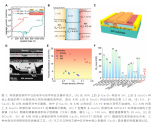Xi'an University of Electronic Science and Technology's Academician Hao Yue's team: New breakthrough in gallium oxide RF device research!
A research team from Xidian University, led by Academician Hao Yue, Professors Zhang Jincheng and Zhou Hong, published a breakthrough study in Science Advances on heterogeneous integration of ultrawide bandgap (UWBG) semiconductors for high-performance radio frequency (RF) power devices.
UWBG materials like Ga₂O₃, AlN, and diamond offer excellent properties such as high critical electric field and saturation electron velocity but face challenges in simultaneously achieving shallow-level doping and high thermal conductivity. Existing integration methods suffer from small film sizes, material damage, and poor thermal interface.
The team developed a novel, scalable peel-off-based layer transfer technique, combining mechanical exfoliation, array transfer, and wafer-level direct bonding. This approach enables large-area, uniform doping of gallium oxide (Ga₂O₃) films on high-thermal-conductivity aluminum nitride (AlN) substrates—without requiring ion implantation or dielectric interfaces.
T-gate RF power transistors achieve:
- Output power densities: 4.6 W/mm² at 2 GHz, 4.1 W/mm² at 6 GHz
- Maximum oscillation frequency: 90 GHz (highest reported for UWBG devices)
- Minimum noise figure: 0.48 dB at 8 GHz (among the lowest in this class)
The large conduction band offset (3.4 eV) at the Ga₂O₃/AlN interface enhances electron confinement, boosting device performance.
This method offers a promising path for next-generation RF devices in communications, aerospace, and defense by enabling high efficiency, power density, and thermal stability through heterogeneous integration of complementary UWBG materials.

This method offers a promising path for next-generation RF devices in communications, aerospace, and defense by enabling high efficiency, power density, and thermal stability through heterogeneous integration of complementary UWBG materials.

